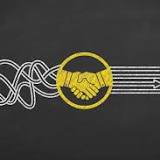How 3D printing saved a green sea turtle from bubble butt

3D printing solutions provider, Aida, uses Formlabs Fuse to create special harness for Charlottle the sea turtle.
As fascinating as the cutting-edge research and industrial applications of 3D printing are, sometimes the best arguments for adopting the technology can be found in simple, practical use cases. Take Charlotte the green sea turtle, for example.
He* was rescued by the Connecticut-based Mystic Aquarium in 2008 after being struck by a boat propeller. The accident resulted in Charlotte suffering from a hilariously named but still tragic condition known as “bubble butt syndrome” which refers to air getting trapped in the back of his shell and causing his rear to tilt up at a 45-degree angle.
This unnatural orientation is obviously not ideal for Charlotte’s breast stroke and so, as a stopgap, the Mystic aquarium staff attached two rectangular weights to the back of his shell. This improved his ability to swim, but he still tended to float up at the rear when stationary and the weights were not easily adjustable to compensate for shifts in the trapped air bubbles’ position.
Enter Adia, a 3D printing solutions company that collaborated with Mystic Aquarium on finding a better way to help Charlotte. After five years of design work in collaboration with Formlabs and the computational design team at New Balance Athletics, Adia was able to create a new custom harness just for Charlotte. The work included 3D scanning Charlotte as well as multiple prototypes to ensure the best mix of fit, comfort and function, along with a weight system that handlers can adjust as the air bubbles in his shell shift position.
Adia selected the Formlabs Fuse 3D printer for several reasons, including its build volume (large enough to print a harness for a green sea turtle), its material compatibility (Adia use Nylon 11 CF power, a carbon fiber material with a good rigidity-to-weight ratio) and its availability. On that last point, Adia and New Balance are now issuing a call for volunteers with experience in 3D printing, computational design and materials science to help other injured sea turtles with future harness designs.
Charlotte was just fitted with his harness last week and his handler, Claire, says he’s doing great. It’s even helping with his rear flipper paralysis. Here’s hoping more sea turtles will be able to benefit from this incredible work.
*Charlotte is male, but was named before he was fully mature and mistakenly taken to be female.


 Canada
Canada Argentina
Argentina  Australia
Australia  Austria
Austria  Brazil
Brazil  Germany
Germany  Ireland
Ireland  Italy
Italy  Malaysia
Malaysia  Mexico
Mexico  New Zealand
New Zealand  Poland
Poland  South Africa
South Africa  United Kingdom
United Kingdom  United States
United States 






















